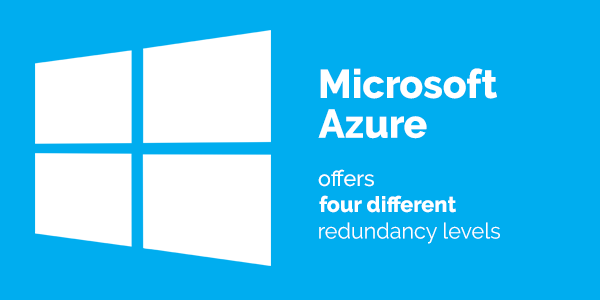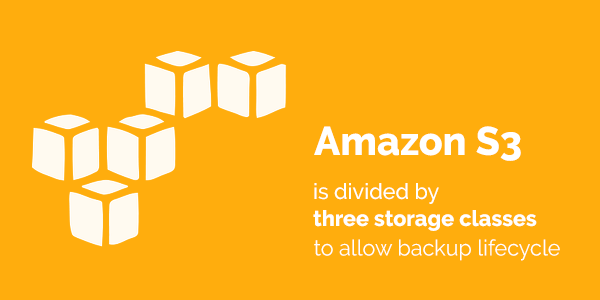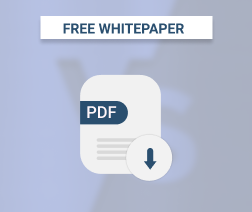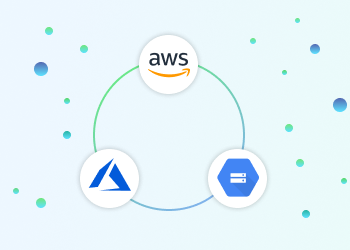Cloud users typically choose a multi-vendor approach for their data backup and storage tasks. Using different solutions leads to more flexibility and often allows to cut overall expenditures. Azure, AWS, and Google are among the world's top providers of cloud storage services, so it is important to know about their differences in order to choose the right vendor for each particular need.
Table of Contents
Google Cloud Storage

Google Cloud Storage is a business-ready alternative for Google Drive.
There are three storage classes:
- Standard
- Nearline
- Coldline
The Standard class guarantees high availability which means that stored data and services can be accessed at any time. It also guarantees low latency allowing to retrieve data within tens of milliseconds.
The Nearline class provides lower availability and 30 days early deletion fee so it is recommended to use it for prolonged storage of data that are not urgently needed.
Further reading How to Back Up to Google Nearline
The Coldline storage is cheaper than Nearline and is supposed to be the archival storage. All features of that storage class are similar to Nearline except for a longer early deletion fee - 90 days.
All three classes allow the booking of redundant storage facilities and multi-regional options. All of them support data versioning on a bucket level. Server-side data encryption is performed for each scenario. Stored files can also be compressed on demand. Each bucket allows configuring lifecycle settings for objects stored there. Besides, the Nearline and Coldline storage classes users will be billed for data retrieval or their early deletion. More details on pricing can be found at Google's Pricing page.
Further reading How to Sign Up for Google Cloud
Microsoft Azure Storage

Microsoft Azure's cloud storage provides three access tiers:
- Hot - for frequently accessed data, 99.9% SLA.
- Cool - for less frequently accessed data at a lower storage cost, 99% SLA.
- Archive - for storing data that is accessed every 180 days or even less frequently, at the lowest storage cost (but with the highest access cost).
For details on different storage tiers and when to use them, see our guide:
Further reading Azure Blob Storage Tiers
Microsoft Azure supports several scenarios of data storage. One of them is Azure Blob storage. Blobs are objects containing binary, document, or media data and can be used for storing backups. An Azure user can create as many blobs as needed, though their entire volume cannot exceed 500 TB.
Check out our guide to using Azure Blob storage for backup:
Further reading How to Start Using MSP360 Backup with Microsoft Azure
When creating a backup in Standard class storage, the user has to select a replication level: that is, the number of copies of data that should be created and where they should be stored, physically. Several copies stored in different facilities are less likely to be affected by any kind of disaster. The following levels are available:
- Locally Redundant Storage (LRS) - three copies within a single facility; provided at a discount;
- Zone-Redundant Storage (ZRS) - three copies across multiple data centers or across regions;
- Geo-Redundant Storage (GRS) - six copies in two different regions; the price is higher than for ZRS;
- Read Access Geo-Redundant Storage (RA-GRS) - six copies in two different locations plus the user has read access from the second region used for GRS; the price is higher than for GRS.
Learn more about redundancy in different Azure storage types:
Further reading Azure Redundancy Options
Microsoft Azure cloud storage allows versioning management.
Data encryption can be performed on the server- or client-side. Stored objects' lifecycle is managed by selecting a retention policy for them. Data retrieval from Azure storage is free, other pricing details can be found on Azure pricing page.
Amazon S3

Amazon's S3 isa data storage service by Amazon Web Services. It has eight storage classes:
- Amazon S3 Standard
- Amazon S3 Standard - Infrequent Access
- Amazon S3 One Zone - Infrequent Access
- Amazon S3 Glacier Instant Retrieval
- Amazon S3 Glacier Flexible Retrieval
- Amazon S3 Glacier Deep Archive
- Amazon S3 RRS (Reduced Redundancy Storage)
- S3 Intelligent Tiering
The Standard Class is a great option for urgent data because of its low latency and easy access to stored objects. The Infrequent Access class provides basically the same services but takes a data retrieval fee while its cost of storage per 1GB is lower. The Glacier class is designed for prolonged data archiving as it has higher latency, lower availability, and data retrieval fee. All three classes ensure data encryption at server side and while transferring plus allow lifecycle management and versioning.
S3 Intelligent Tiering is the newest storage class, that allows to automatically move your data between Amazon S3 Standard and Amazon S3 IA classes, depending on your current needs.
Further reading S3 Storage Classes Explained
Learn more about AWS backup with MSP360.
Comparison of AWS, Azure and Google Cloud
Let us summarize the differences between these vendors:
|
Feature |
Microsoft Azure | Amazon S3 | Google Cloud Storage |
| Availability |
99.9% for Standard class (99% for Cool tier) |
99.9% for Standard and IA classes |
99.9% for Standard class |
|
Versioning |
Supported |
Supported | Supported |
|
Lifecycle Management |
Supported | Supported |
Supported |
|
Encryption |
Server-side + on-demand client-side | Server-side + Server -side with user password |
Server-side |
| Compression |
Supported |
Not supported |
On-demand |
|
Data Retrieval |
Free | $0.01 per GB for IA, for Glacier class $0.0025-$0.03 per GB depending on retrieval type |
$0.01 per GB for Nearline class, $0.01 per GB for Coldline class |
How Can MSP360 Help?
So, each of the vendors listed above has certain pros and cons, and sometimes it is worth using different backup services for different needs. MSP360 Backup is seamlessly integrated with all three of them, allowing you to utilize the following enhancements:
- Select any of these vendors and create a backup in a storage class of your choice directly from a MSP360 UI.
- Perform compression of the stored data on your own, on the client side, so that your data not only requires less storage capacity but also takes fewer traffic expenditures while transferring.
- Add client-side encryption and SSL for data transfer for a better security - you will be the only keeper of the password
- Transfer your data faster with MSP360 multipart/multithread upload,





